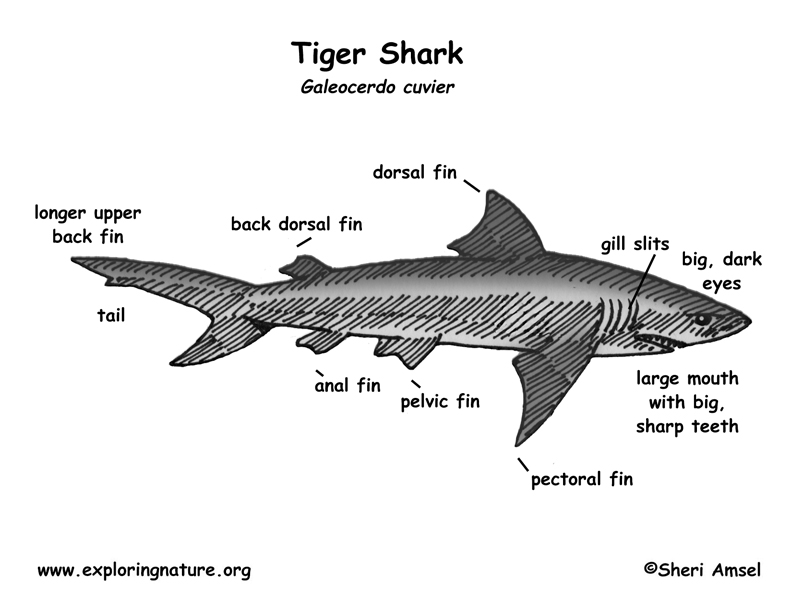

They are found in tropical waters around the world.
They live out beyond coral reefs in deep waters, often down as deep as 500 feet.
They are large with dark stripes on their gray back that fade as the shark ages. They are lighter underneath. They have a wide mouth full of sharp teeth. They can reach up to 17 feet long.
They are active at night (nocturnal). They do enter shallow reefs and island bays at night to feed. They are a dangerous predator that will attack humans.
They eat seals, sea lions, porpoises, sea turtles, stingrays and even jellyfish. They are also scavengers and will eat whatever they find in the water.
Females are pregnant for a year (gestation). The eggs hatch while still inside the females so young are born live (ovoviviparous). It can have as many as has 80 babies.
Kingdom: Animalia
Phylum: Chordata
Class: Chondrichthyes
Order: Carcharhiniformes
Family: Carcharhinidae
Genus: Galeocerdo
Species: G. cuvier
When you research information you must cite the reference. Citing for websites is different from citing from books, magazines and periodicals. The style of citing shown here is from the MLA Style Citations (Modern Language Association).
When citing a WEBSITE the general format is as follows.
Author Last Name, First Name(s). "Title: Subtitle of Part of Web Page, if appropriate." Title: Subtitle: Section of Page if appropriate. Sponsoring/Publishing Agency, If Given. Additional significant descriptive information. Date of Electronic Publication or other Date, such as Last Updated. Day Month Year of access < URL >.
Amsel, Sheri. "Shark (Tiger)" Exploring Nature Educational Resource ©2005-2024. December 13, 2024
< http://exploringnature.org/db/view/Shark-Tiger >

